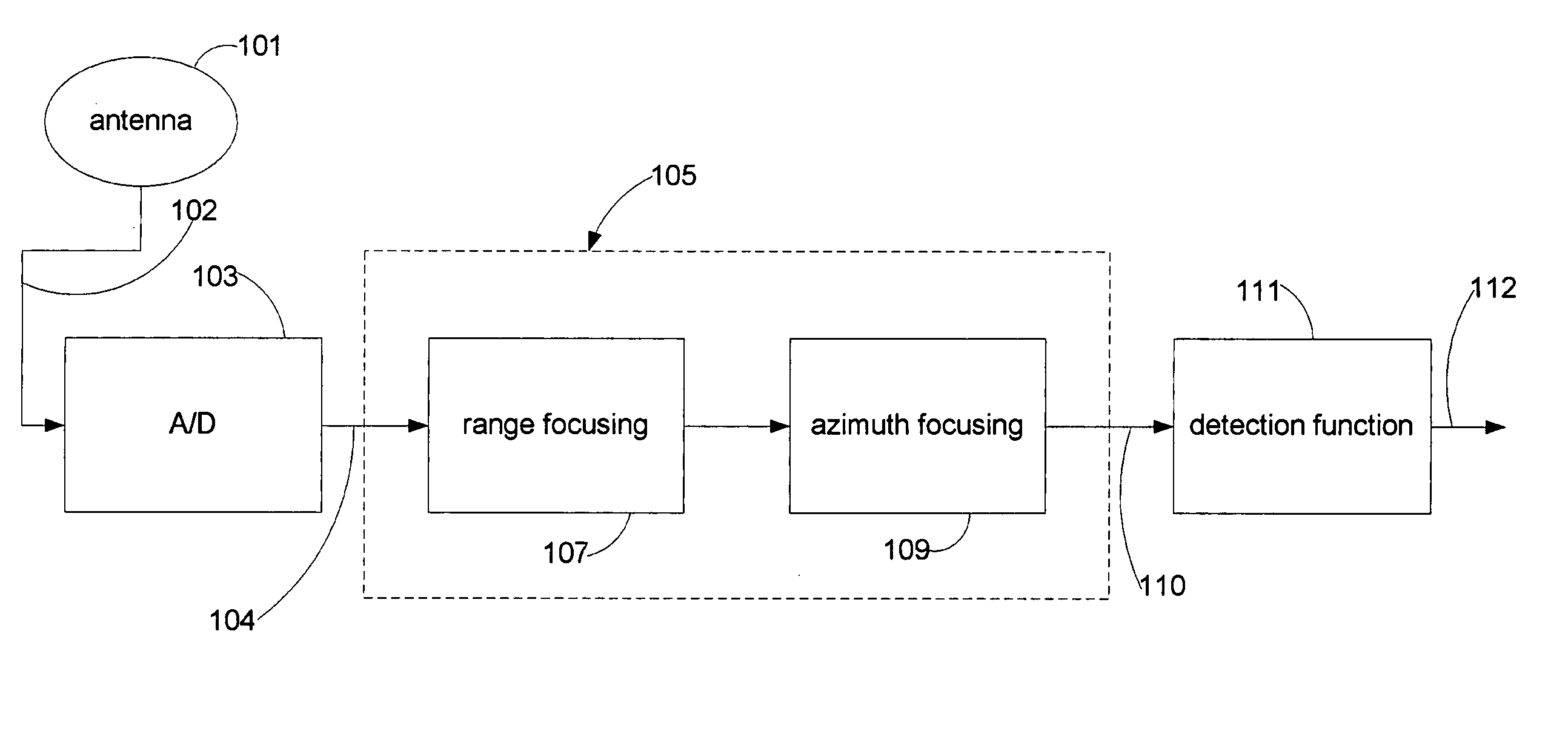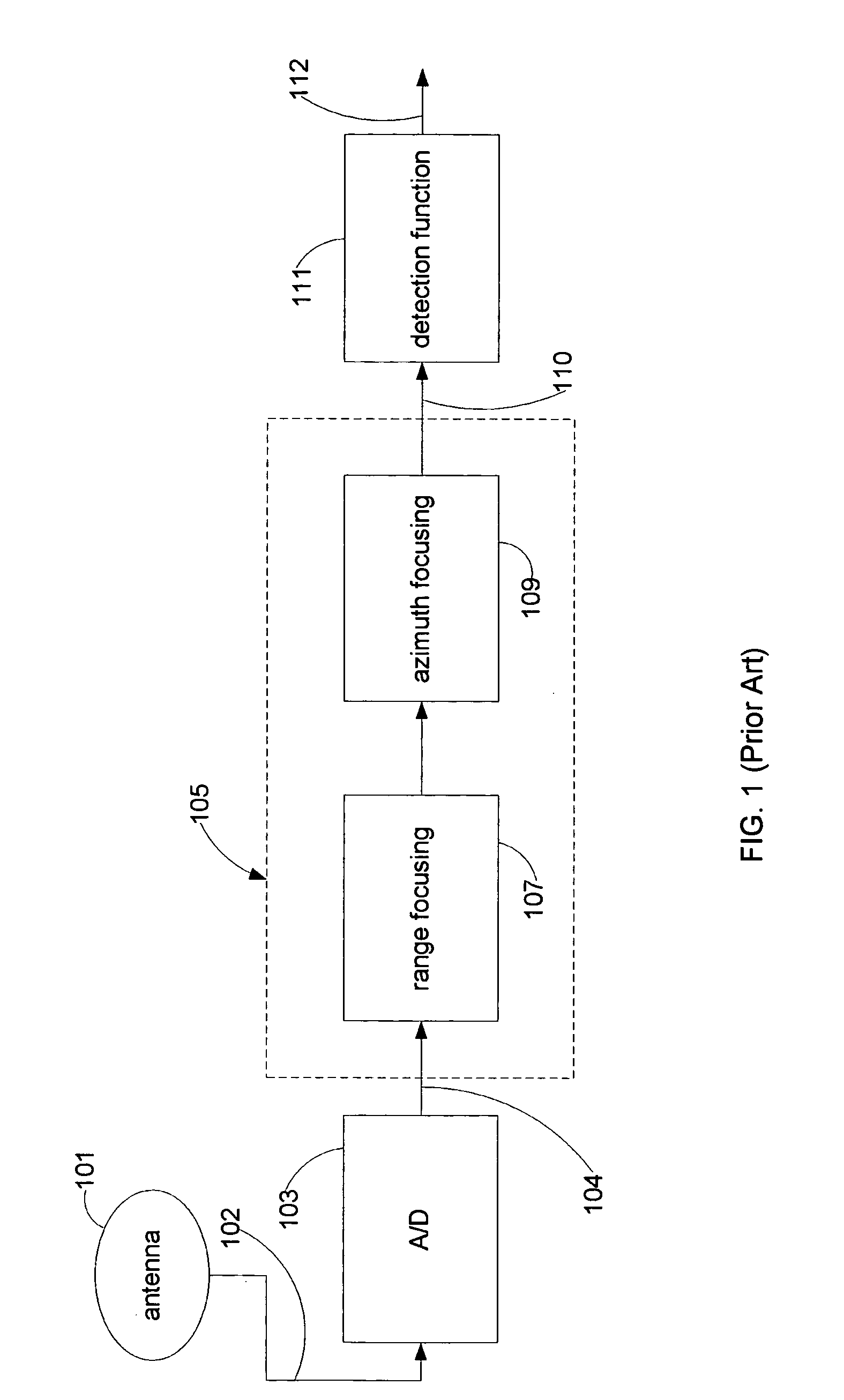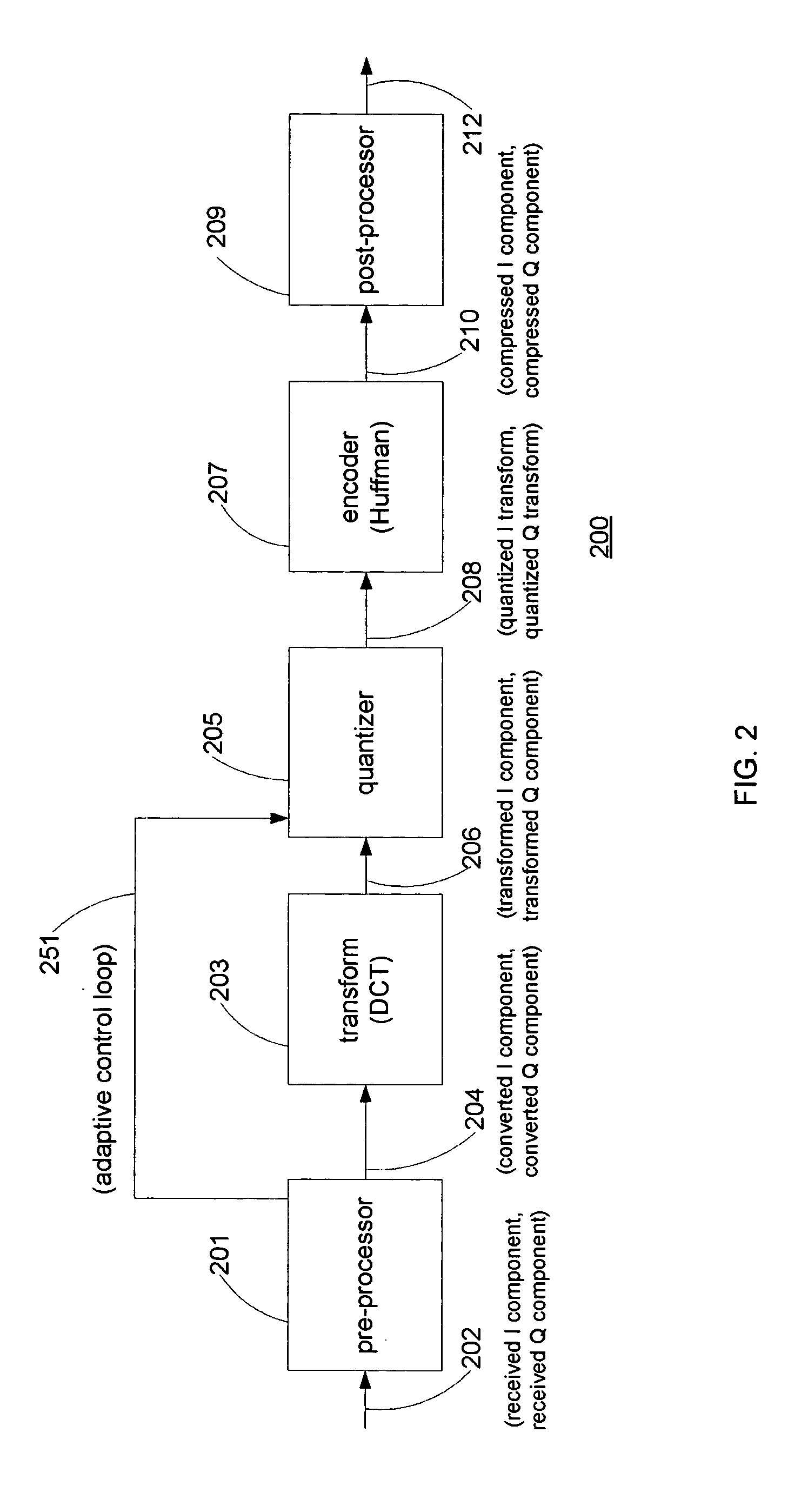Measurement and signature intelligence analysis and reduction technique
a technology of intelligence analysis and measurement, applied in the field of compression and decompression of data, can solve the problems of limited processing and storage capabilities, inability to efficiently compress phase information, and large amount of data collected by existing complex sar sensors
- Summary
- Abstract
- Description
- Claims
- Application Information
AI Technical Summary
Benefits of technology
Problems solved by technology
Method used
Image
Examples
Embodiment Construction
First-Generation Embodiments
[0034]In the following description of the various embodiments, reference is made to the accompanying drawings which form a part hereof, and in which is shown by way of illustration various embodiments in which the invention may be practiced. It is to be understood that other embodiments may be utilized and structural and functional modifications may be made without departing from the scope of the present invention.
[0035]FIG. 2 shows an apparatus 200 for compressing Synthetic Aperture Radar (SAR) data 202 in accordance with an embodiment of the invention. Synthetic Aperture Radar (SAR) data 202 can be compressed by apparatus 200 from Video Phase History (VPH) data format 104 or from a processed version typically referred as a single look complex SLC format 110. There are advantages and disadvantages associated with each format. VPH data 104 is available almost immediately, but is highly uncorrelated. Single look complex SLC data 110 exhibits some local cor...
PUM
 Login to View More
Login to View More Abstract
Description
Claims
Application Information
 Login to View More
Login to View More - R&D
- Intellectual Property
- Life Sciences
- Materials
- Tech Scout
- Unparalleled Data Quality
- Higher Quality Content
- 60% Fewer Hallucinations
Browse by: Latest US Patents, China's latest patents, Technical Efficacy Thesaurus, Application Domain, Technology Topic, Popular Technical Reports.
© 2025 PatSnap. All rights reserved.Legal|Privacy policy|Modern Slavery Act Transparency Statement|Sitemap|About US| Contact US: help@patsnap.com



